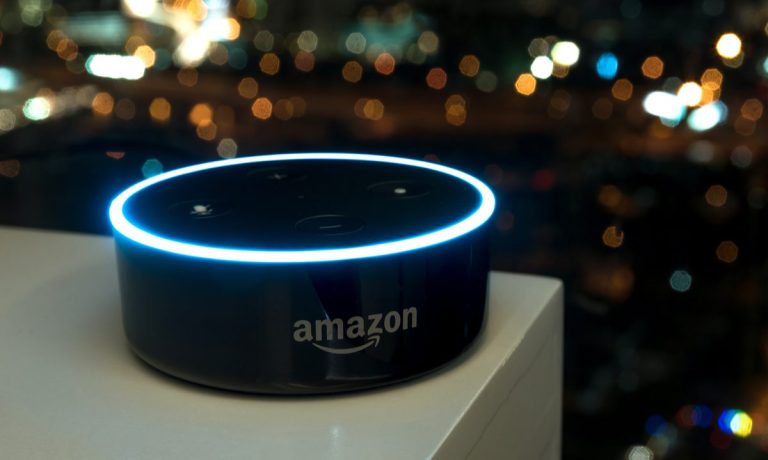
In a year that has seen Amazon blog about its voice-powered Alexa device 28 different times as part of its effort to grow its overall ecosystem of connected devices, the eCommerce giant has finally taken on the 800-pound eavesdropper in the room.
This, as the retail giant’s 12th Alexa update this quarter aims to diffuse consumer privacy concerns — or “myths” as it calls them — that have plagued its growing portfolio of listening and answering devices since their launch in 2014.
But the real question is, ‘Why now?’
“We’re clearing up common misconceptions about how Alexa works, from how your privacy is protected to managing your experience,” the unsigned blog post begins, beneath the banner headline “Busting the 4 biggest myths about Amazon’s Alexa.”
Specifically, the Seattle-based tech titan takes on issues ranging where and what is heard and recorded, to users’ ability to monitor and delete what they’ve said, as well as broad security questions concerning the risk of being hacked to strangers being able to eavesdrop on your home.
Demystifying Alexa
In comparing the emergence of Alexa and Echo devices to the reluctant uptake consumers initially gave in the early days of television, computers and the internet, Amazon said it wanted to demystify how Alexa works.
“Emerging technologies often face skepticism, especially if it isn’t immediately clear how they work or what benefit they serve,” the blog stated. “The same goes for voice assistants like Alexa: Aspects of how they work are sometimes still misunderstood.”
At the top of the list of misunderstandings, Amazon points out, is consumers’ concern how their little digital device can be always listening to be summoned yet able to ignore everything else that is being said, a differentiation skill it attributes to five specific “wake words.”
“Until your Echo device detects your chosen wake word—current options include ‘Alexa,’ ‘Amazon,’ ‘Echo,’ ‘Ziggy,’ and ‘Computer’ — Alexa does not record or store what you or any other person in the room has said,” the blog explains, noting that a blue light is also activated when the device is listening, and that it can be manually turned off and on as well.
In addition to referring customers to visit the device’s privacy settings to manage or delete voice history and recordings, either on the spot or automatically on a recurring basis, Amazon also gave customers its assurance that shared information is secure and encrypted.
“Data encryption, rigorous security reviews, and regular automatic updates to your Alexa-enabled devices work together to help ensure they operate as securely as possible,” the company said without providing further details pertaining to any reported breaches or hacks.
“Beyond designing all of our devices and services with security in mind, we dedicate significant resources and people power to test and maintain the safety of our devices,” Amazon added.
But Will It Work?
It is still unclear why Amazon felt the need to broach this subject now in the wake of two dozen other Alexa-tagged blog posts ranging from summer playlists to how elederly users and loved ones feel safer knowing that someone — or thing — can hear a cry for help.
Whether the Myth Busting explanation eases any minds is also up for debate, especially among the tech-savvy privacy advocates that have written critically about the voice-activated devices for years.
That said, PYMNTS Feb 2022 Consumer Authentication Experiences study done in collaboration with Pindrop, noted that voice tech growth and developments were not only expected to ramp up throughout 2022, but that “52% of consumers accessing accounts digitally were satisfied, while only 43% using their phones are satisfied with digital authentication and want options like voice available.”
“This data both highlights the sizable opportunity to improve customer satisfaction and suggests that organizations looking to do so would be wise to consider voice-based solutions that could be consistent across digital and phone-based communications,” the report said.